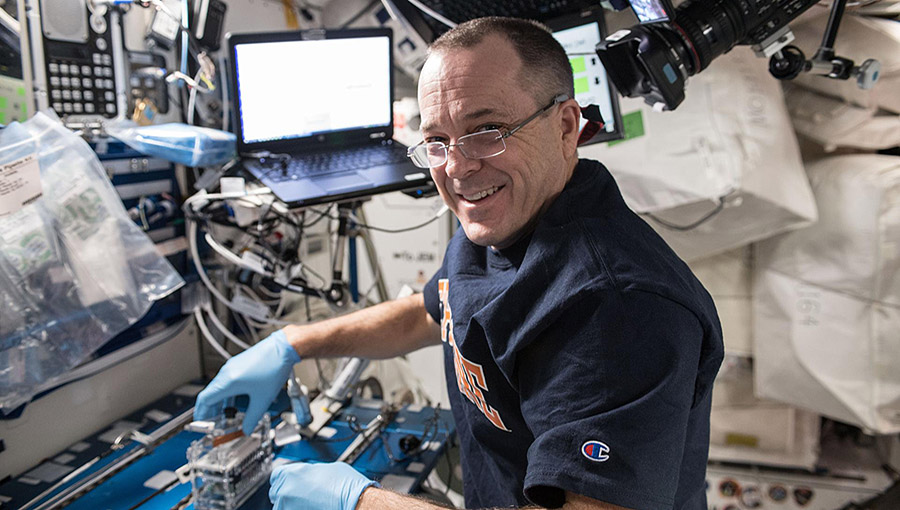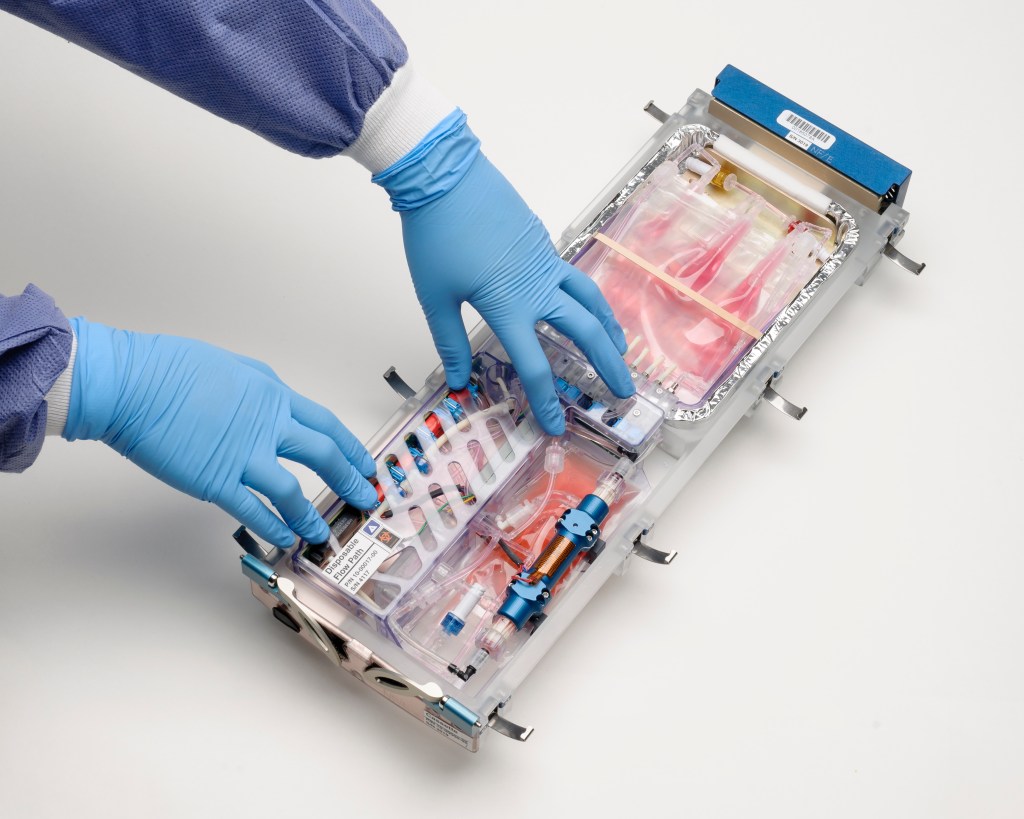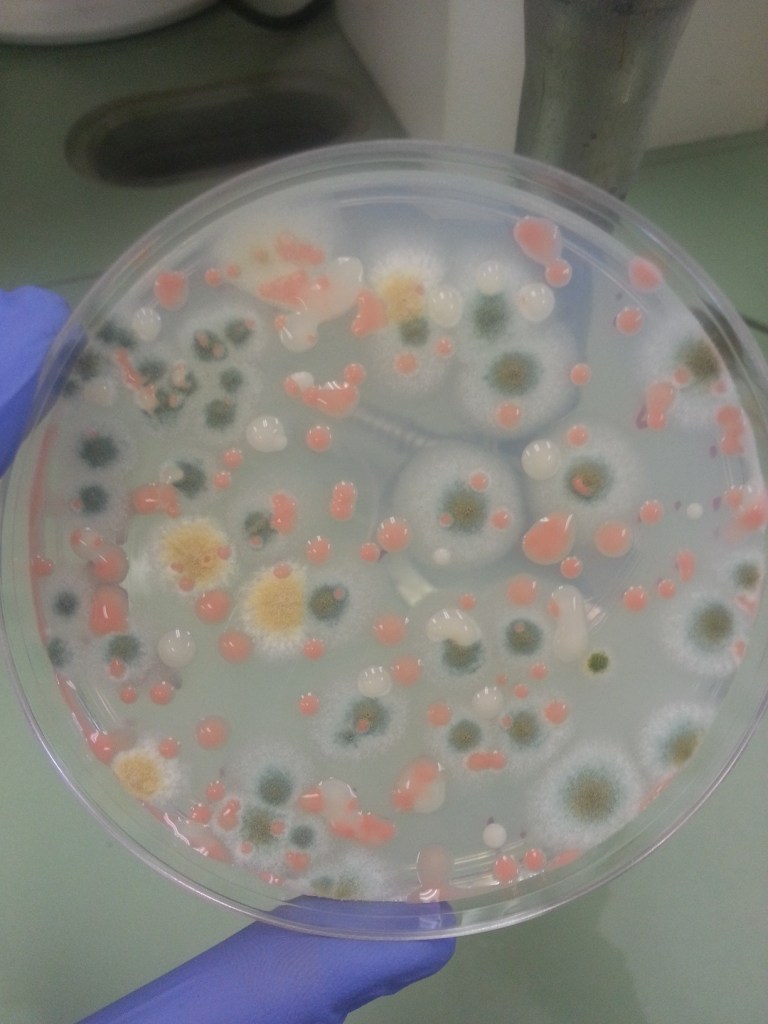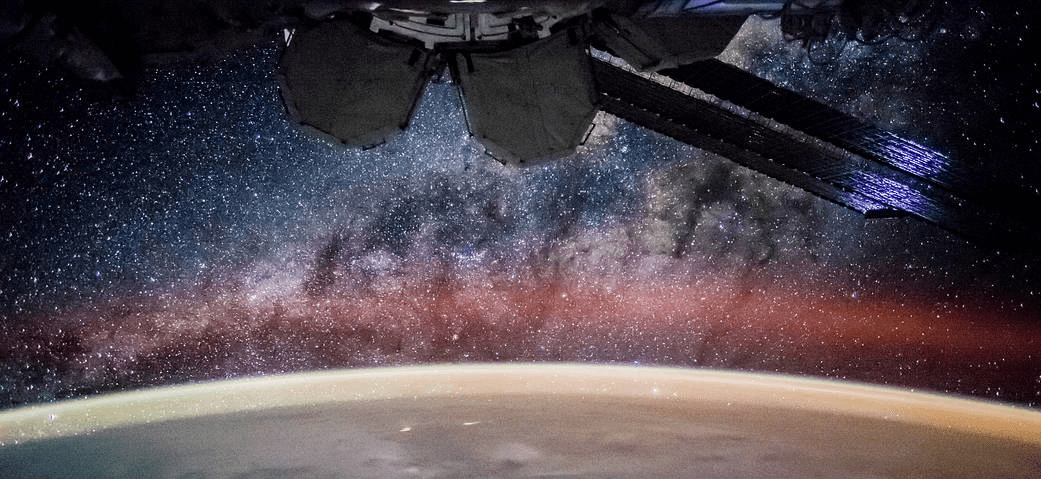Why Study Animals in Space?
When humans travel in space the extreme environment causes loss of bone and muscle, immune system dysregulation, cardiovascular system changes and other health hazards.
By sending model organisms, such as fruit flies, nematode worms, and rodents into space, scientists can unravel the complex molecular changes that are triggered by stressors like microgravity, oxidative stress and space radiation. Understanding the underlying mechanisms is the first step to developing health countermeasures to protect astronaut health for future missions.
Animal Biology Missions
Growing Cells in Space
Understanding how cells respond to the pressures of space can tell us a lot about the role of gravity in the development and survival of living things.
By growing cells in culture in a specialized bioreactor to keep them alive in space, researchers can understand how the process of cell cycle arrest and stem cell differentiation are affected by microgravity, oxidative stress and radiation.
Cell Biology Missions
Do Microbes Survive in Space?
Everywhere humans travel, they take their microbes with them – including space!
NASA’s robotics technology has allowed us to send robotic orbiters, landers, and rovers ahead of us to study other planets and identify potential signs for life. On the International Space Station, NASA and their partners have used robotic technology extensively, to lorem and ipsum the dolor sit amets and more.
Microbiology Missions
Can Plants Grow in Space?
Plant biology missions help to address questions about whether plants that evolved on Earth can grow in space to support long-duration missions.
Humans will need to grow plants in space in order to support a healthy diet and improve the closed environment of a spacecraft. Water behaves very differently in space and creates challenges for root wetting. The kinds of light and growth media for plants to thrive in space are being tested through a continuous series of plant growth missions.
Plant Biology Missions
Bioengineering Safer Space Travel
Harnessing the power of biology to grow food and make corrosion-resistant spacecraft materials
Bioengineering Missions
Latest Space Bioscience Missions

Cell Science
Some aspects of life function differently in space, and biologists can learn a lot about how it impacts human health by studying cells grown in the microgravity environment, or weightlessness, of the International Space Station.

Rodent Research
The Rodent Research Hardware System provides a research platform aboard the International Space Station for long-duration rodent experiments in space. Such experiments examine how microgravity affects the rodents, providing information relevant to human spaceflight, discoveries in basic biology, and knowledge that can help treat human disease on Earth.

Fruit Fly Lab
NASA's Fruit Fly Lab provides a research platform aboard the International Space Station for long-duration fruit fly (Drosophila melanogaster) studies in space.

Microbial Tracking
The Microbial Tracking studies will use culture-based and high-throughput methods of molecular analysis to analyze air and surface samples returned from the space station. The high-throughput methods complement traditional culture-based methods of microbial analysis and allow for identification of “unculturable” microbes.

Heat Melt Compactor
Dealing with trash is a challenge wherever people work and live, and space is no exception. To better manage this, NASA is developing a new trash processing system to demonstrate on the International Space Station.

BioNutrients
The BioNutrients system uses a small storage pack containing a dried, edible growth substrate and microorganisms genetically engineered to rapidly produce controlled quantities of essential nutrients. Because the growth substrate and microorganisms both have a long shelf-life at room temperature and they only need water to be activated, the system provides a simple, practical way to produce essential nutrients on-demand.































